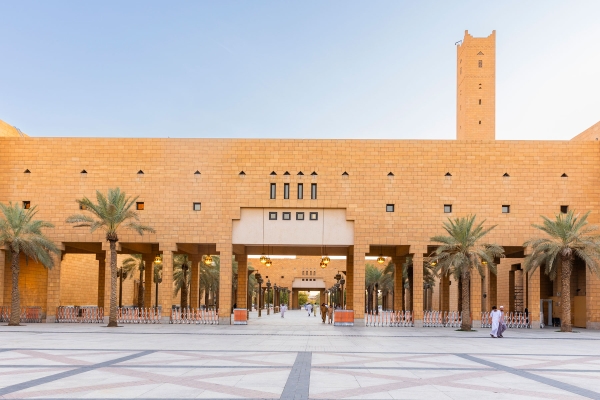



Al-Safat Square, historically known as "al-Baraha", is a spacious square in Riyadh City, the capital of the Kingdom of Saudi Arabia. The square holds significant importance due to its central location within the city, being surrounded by the main marketplace and offering views of al-Hukm Palace and several other notable palaces. Today, al-Safat Square is part of al-Hukm Palace district, which serves as the administrative, cultural, and commercial hub of Riyadh City.
Al-Safat Square history
Al-Safat takes its name from the Arabic term meaning the wide and smooth stone. The square's history dates back to the nineteenth century when Imam Turki Bin Abdullah, the founder of the Second Saudi State, designated Riyadh as the capital of his state, replacing ad-Dir'iyyah, the capital of the first Saudi State. He constructed the Grand Mosque, which still bears his name today. Al-Masmak Palace, which witnessed the recapture of Riyadh by King Abdulaziz Bin Abdulrahman Al Saud, was later added to the square.
Al-Safat Square was historically a marketplace for camels, horses, and weapons. It also served as a resting place for the camels of those arriving in Riyadh City and was a venue for Ardah performances during national celebrations, with King Abdulaziz participating in one of these performances alongside the people of Riyadh.
The square was incorporated into al-Hukm Palace District Development Project, which commenced in 1974 and concluded in 2000. The Royal Commission for Riyadh City (RCRC) focused on enhancing the urban design of the province, improving the overall appearance, and optimizing transportation and services, while preserving the area's heritage and historical sites.
Al-Safat Square location
Al-Safat Square is a spacious, rectangular plaza extending from east to west between the Grand Mosque, Imam Turki Bin Abdullah Mosque, and al-Hukm Palace. The square connects to Justice Square on its western side, with the royal entrance to al-Hukm Palace directly opening onto it. Al-Hukm Palace is linked to Imam Turki Bin Abdullah Mosque both at ground level and via two bridges on the first floor.
The square is a commercial area surrounded by markets. To its west are al-al-Muʼaykaliyah Market and Souq al-Zal, which was originally located east of the mosque but was later moved to the south of the square into a Qaisariya built specifically for it. To the east lies al-Thumairi Street, which remains a market for gold and jewelry to this day. Additionally, a new cultural landmark, Qaisariat al-Kitab, has been introduced.
Al-Safat Clock
Al-Safat Square features a historic landmark in its southern section, known as "al-Safat Clock." The clock began operating on April 21, 1966, and was constructed by Riyadh City Municipality. It was one of the projects overseen by Prince Fahd Bin Faisal Bin Farhan Al Saud, the first mayor of Riyadh City. At that time, it was one of the most prominent landmarks in Riyadh, leading some to refer to it as the "Big Ben of Riyadh." The clock would emit a sound signal to mark the hours through four loudspeakers positioned in each of the cardinal directions, with its chimes reaching a distance of approximately two thousand m.
Related quizzes
Related articles

